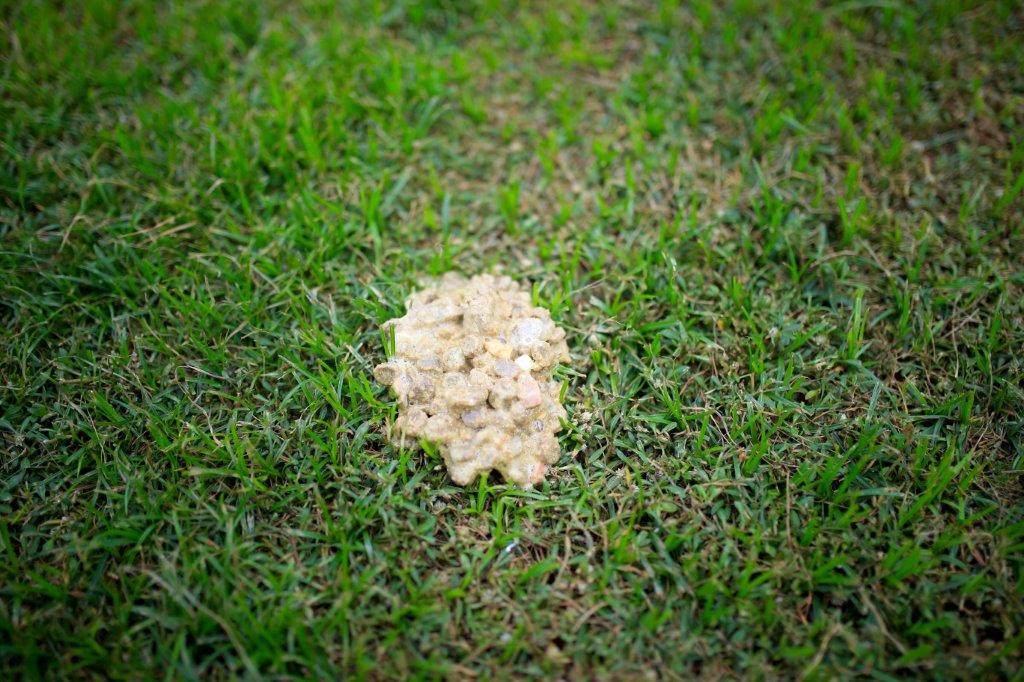Slime mould in lawn
Author: Stefan Palm Date Posted: 13 June 2023
During wet, cold and cloudy conditions, an organism known as slime mould may appear on your lawn. It's common at this time of year and while it looks alarming it has more bark than bite!
Slime mould is an odd-looking mould that can take on many forms ranging from a blob that resembles dog vomit to small patches of turf that look to be covered with tiny, round balls attached to the lawn blades (see photos on this blog for examples of how this looks). The patches develop very quickly, usually overnight and can be white, grey, black, yellow, or orange in colour..jpg)
While it has been reported that dryer conditions may be coming, May and June certainly haven’t been reminiscent of that, with rain falling on 21 days and cloud cover being present for all but one day. This has created ideal conditions for slime moulds to grow, and we’ve certainly seen plenty of people coming to see us with weird photos and samples of the mould in hand over the last month or so.
What is slime mould?
Slime mould is a primitive organism that has the properties of a fungus. They use turf blades simply as a structural support to grow on and obtain their nutrients from dead and decaying organic matter in the lawn’s thatch or the soil under the lawn rather than from living plant tissue. One colony can typically be the size of a 50-cent piece right through the size of a dinner plate. You may notice just one of them on your lawn, or you may have many of them.
As the mould moves through its lifecycle (which can be as short as a few days), it will usually fade to grey, become brittle and turn to powder when disturbed, giving the appearance of powdery soot.
Will slime mould hurt your lawn?
It’s good to know that slime moulds won’t hurt your lawn. This is because they don’t feed on your lawn, nor are they a disease. In this way, they are a beneficial  organism that helps break down dead plant material, returning nutrients to the soil.
organism that helps break down dead plant material, returning nutrients to the soil.
While they don’t harm your lawn, they do look menacing and even alarming in some instances, with most people wanting to treat them as soon as they appear. If you do notice this type of mould in your lawn, I can assure you the worst they can do is cause a slight yellowing effect as a result of blocking sunlight from the blades of the lawn.
How do you treat slime mould?
There is no need to use any sort of chemical to treat slime mould. It can be physically removed by mowing your lawn, raking, or brooming it off. It can be sticky though, so be prepared for that! You can also squirt it off with a hose, but in doing this, you may perpetuate the wet conditions that made way for it in the first place.
Left alone, slime mould will go away by itself in the change of seasons in the warmer, dryer weather conditions.
If you have any questions regarding a problem you're experiencing with your lawn, give us a call on 8298 0555 or send an email to info@paulmunnsinstantlawn.com.au.
